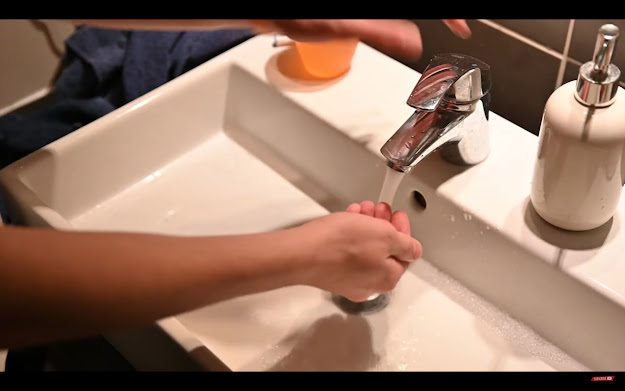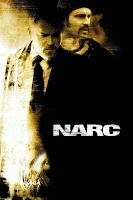Keeping Safe During the Coronavirus Pandemic
8 July 2020
Focus Media Arts Centre
Chloё Nguyen-Drury
The COVID-19 virus, also known as Coronavirus, has changed every aspect of our lives. What originated as a small cluster of cases in Wuhan, China, has quickly spread worldwide. On 11 March 2020, the WHO declared COVID-19 a pandemic (World Health Organization 2020). In this hyper-connected world, global travel has played a significant role in the spread of the virus. Infected persons visiting or returning to Canada have brought the disease to our backyard, leading to community spread (transmission from one community member to another). Additionally, Canadians who were travelling abroad have had difficulty returning home, as cancelled flights and travel restrictions limit residents from returning to their country.
As of 8 July 2020, Canada has reported 106,434 cases, including 70,247 recovered and 8,737 fatalities. Ontario has reported 36,178 confirmed cases of COVID, the second-highest number in the country after Québec (Public Health Ontario). Of those, 31,805 are recovered and 2,700 have resulted in deaths. This puts Ontario’s recovery rate at 88%, a far higher number than Canada’s overall recovery rate of 66% (Wikipedia.org).
COVID is a respiratory disease that affects the nose, throat, and lungs. It’s spread primarily through respiratory droplets like coughing and sneezing, and through prolonged physical contact. No one is safe from COVID-19, but certain demographics may be at higher risk of contracting the disease than others. These groups include people over 65 years old, immuno-compromised people, or people with pre-existing medical conditions.
What can you do to protect yourself and others? Unless you’re an essential worker, stay home as much as possible. Exceptions include grocery shopping, picking up prescriptions and medical supplies, or attending a medical appointment. If you do need to leave your house, practice social distancing by staying at least two metres (or six feet) away from people. Avoid large gatherings and crowds, especially places where social distancing cannot be maintained.
Total isolation is near-impossible for many of us, so remember to practice proper hygiene when you do go out. Wear a mask; they prevent you from spreading droplets and provide extra protection if people sneeze or cough near you. Use CDC-approved alcohol-based hand sanitizers, preferably with greater than 60% ethanol or 70% isopropanol (CDC). Wash your hands frequently with soap and hot water to kill germs. Disinfect high-touch areas, like doorknobs, handles, and your cell phone. Avoid touching your face, since your eyes, nose, and mouth are points of entry for the virus.
While we may not see the likes of conventions, festivals, or the CNE anytime soon, different sectors are rethinking how they operate in a post-COVID world. People are working from home, medical appointments are held through online video calls, and schools are planning to re-open with small class sizes. As scary as the COVID crisis seems, it’s important to remember that life will return to normal--or at least, some semblance of it.
References:
World Health Organization. “Timeline of WHO’s response to COVID-19.” WHO, 29 June 2020, who.int/news-room/detail/29-06-2020-covidtimeline. Accessed 8 July 2020. Public Health Ontario. “Ontario COVID-19 Data Tool.” Ontario Agency for Health Protection and Promotion, 8 July 2020, publichealthontario.ca/en/data-and-analysis/infectious -disease/covid-19-data-surveillance/covid-19-data-tool. Accessed 8 July 2020. Wikipedia.org. “Template:COVID-19 pandemic data/Canada medical cases by province.” Wikimedia Foundation, Inc., 8 July 2020, en.wikipedia.org/wiki/Template:COVID-19_ pandemic_data/Canada_medical_cases_by_province. Accessed 8 July 2020. Centers for Disease Control and Prevention. “Hand Hygiene Recommendations.” U.S. Department of Health & Human Services, 17 May 2020, cdc.gov/coronavirus/2019-ncov /hcp/hand-hygiene.html. Accessed 8 July 2020.
Focus Media Arts Centre
Chloё Nguyen-Drury
The COVID-19 virus, also known as Coronavirus, has changed every aspect of our lives. What originated as a small cluster of cases in Wuhan, China, has quickly spread worldwide. On 11 March 2020, the WHO declared COVID-19 a pandemic (World Health Organization 2020). In this hyper-connected world, global travel has played a significant role in the spread of the virus. Infected persons visiting or returning to Canada have brought the disease to our backyard, leading to community spread (transmission from one community member to another). Additionally, Canadians who were travelling abroad have had difficulty returning home, as cancelled flights and travel restrictions limit residents from returning to their country.
As of 8 July 2020, Canada has reported 106,434 cases, including 70,247 recovered and 8,737 fatalities. Ontario has reported 36,178 confirmed cases of COVID, the second-highest number in the country after Québec (Public Health Ontario). Of those, 31,805 are recovered and 2,700 have resulted in deaths. This puts Ontario’s recovery rate at 88%, a far higher number than Canada’s overall recovery rate of 66% (Wikipedia.org).
What can you do to protect yourself and others? Unless you’re an essential worker, stay home as much as possible. Exceptions include grocery shopping, picking up prescriptions and medical supplies, or attending a medical appointment. If you do need to leave your house, practice social distancing by staying at least two metres (or six feet) away from people. Avoid large gatherings and crowds, especially places where social distancing cannot be maintained.
Total isolation is near-impossible for many of us, so remember to practice proper hygiene when you do go out. Wear a mask; they prevent you from spreading droplets and provide extra protection if people sneeze or cough near you. Use CDC-approved alcohol-based hand sanitizers, preferably with greater than 60% ethanol or 70% isopropanol (CDC). Wash your hands frequently with soap and hot water to kill germs. Disinfect high-touch areas, like doorknobs, handles, and your cell phone. Avoid touching your face, since your eyes, nose, and mouth are points of entry for the virus.
While we may not see the likes of conventions, festivals, or the CNE anytime soon, different sectors are rethinking how they operate in a post-COVID world. People are working from home, medical appointments are held through online video calls, and schools are planning to re-open with small class sizes. As scary as the COVID crisis seems, it’s important to remember that life will return to normal--or at least, some semblance of it.
World Health Organization. “Timeline of WHO’s response to COVID-19.” WHO, 29 June 2020, who.int/news-room/detail/29-06-2020-covidtimeline. Accessed 8 July 2020. Public Health Ontario. “Ontario COVID-19 Data Tool.” Ontario Agency for Health Protection and Promotion, 8 July 2020, publichealthontario.ca/en/data-and-analysis/infectious -disease/covid-19-data-surveillance/covid-19-data-tool. Accessed 8 July 2020. Wikipedia.org. “Template:COVID-19 pandemic data/Canada medical cases by province.” Wikimedia Foundation, Inc., 8 July 2020, en.wikipedia.org/wiki/Template:COVID-19_ pandemic_data/Canada_medical_cases_by_province. Accessed 8 July 2020. Centers for Disease Control and Prevention. “Hand Hygiene Recommendations.” U.S. Department of Health & Human Services, 17 May 2020, cdc.gov/coronavirus/2019-ncov /hcp/hand-hygiene.html. Accessed 8 July 2020.



Comments
Post a Comment